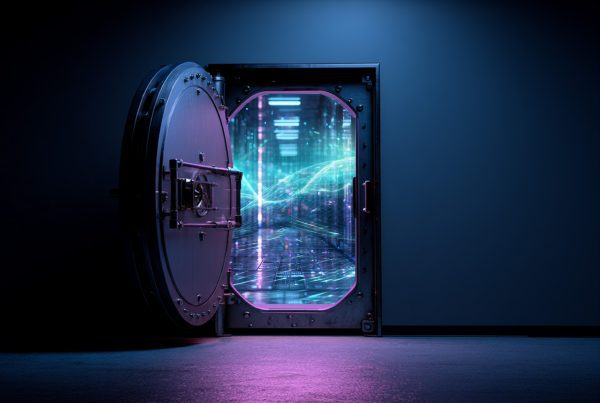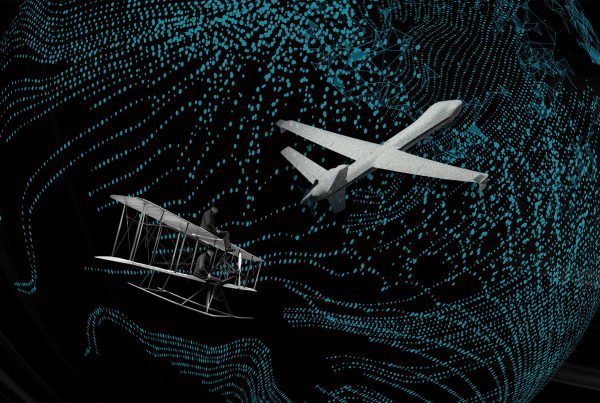Vice President, Defense & Intel Strategy, ECS
Director, Analytics & AI, ECS
AI is transforming industries worldwide, but its most profound and consequential impact is in defense and intelligence. Traditional AI assists human operators by analyzing data or automating routine tasks. In contrast, Agentic AI is capable of autonomous decision-making, goal-directed behavior, and real-time adaptation — and it’s set to revolutionize military strategy, cybersecurity, and intelligence.
From autonomous drones to AI-driven cyber warfare, Agentic AI will make a seismic impact across the full decision-making cycle of autonomous warfare (including sensing, planning, and action), cyber operations, intelligence, and strategic logistics, redefining our nation’s approach to national security.
Autonomous Warfare: The Rise of AI-Driven Combat Systems
Agentic AI is reshaping modern combat by enabling machines to identify, engage, and neutralize threats with unprecedented speed and precision. Unlike systems that rely on human operators, AI-driven drones, robotic tanks, and autonomous swarms analyze data in real time, adapt to changing threats, and execute coordinated attacks without direct human intervention. This increases military effectiveness but also raises new challenges: ethical dilemmas over lethal autonomy, potential system vulnerabilities, and the risk of misuse.
AI-Powered Drones and Swarm Tactics
Unmanned aerial vehicles (UAVs) with Agentic AI autonomously identify targets, coordinate swarm attacks, and adapt to battlefield dynamics. The Defense Innovation Unit (DIU) “Replicator” initiative aims to deploy thousands of autonomous drones to counter China’s military buildup with all-domain attritable autonomous systems (ADA2), as well as counter threats from uncrewed aerial systems (C-sUAS).
AI in Command & Control (C2)
AI rapidly processes data from satellites, drones, and sensors, enabling predictive decisions such as enemy movements based on terrain and historical combat data.
Robot Soldiers and Unmanned Ground Vehicles (UGVs)
Autonomous ground vehicles reduce human exposure in combat zones. Russia’s “Marker” robot and the U.S. Army’s Robotic Combat Vehicle (RCV) program — part of the Next Generation Combat Vehicle (NGCV) initiative — serve as scouts and escorts to protect mechanized units.
Cyber Warfare: AI as Both Sword and Shield
Agentic AI is transforming cyber conflict, functioning as both a powerful offensive weapon and a rapid-response defense. Offensively, AI generates zero-day exploits, deploys adaptive malware, and runs disinformation campaigns at machine speed. Defensively, it detects and neutralizes threats in milliseconds, predicts attack vectors, and autonomously patches vulnerabilities before they’re exploited.
Autonomous Cyber Defense
Both DARPA’s “Cyber Grand Challenge” bots and the Army’s Panoptic Junction tool autonomously detect threats, monitor anomalies, and remediate vulnerabilities faster than any human team.
Offensive Cyber Operations
AI-driven zero-day exploits and synthetic media campaigns can disrupt enemy systems and manipulate communications through deepfakes and disinformation.
Electronic Warfare (EW): Detection (Offensive and Defensive), Counter Jamming
AI adjusts jamming frequencies, counters drone swarms, and interprets SIGINT in real time.
Intelligence Revolution: AI as the Ultimate Analyst
Agentic AI redefines intelligence analysis by processing massive, diverse datasets — satellite imagery, intercepted communications, social media chatter, and financial transactions — at unmatched speed and scale. It detects hidden patterns, forecasts adversaries’ behavior, and generates actionable, real-time insights with near perfect accuracy.
Predictive Intelligence and Threat Forecasting
Agentic AI platforms enable forecasting of terrorist plots, espionage, and military buildups using vast, interconnected datasets. Agents (models) will identify their own capability gaps and build the tools they need, adapting software to evolving mission needs.
Enhanced Surveillance and Reconnaissance
Autonomous systems track high-value targets and process maritime and underwater data in real time. The U.S. Navy uses AI to improve sonar and situational awareness.
The NGA Maven program, which ECS has served as the prime AI Interoperability Integrator (AI3) for since 2017, supports rapid battlefield insights through automated object detection and classification.
Automated Deception Detection and Counterintelligence
Machine learning models analyze speech and biometric data to flag potential insider threats and detect deception. Agent swarms, a team of AI agents, can collaborate to detect, refine insights, and provide invaluable decision support with humans in or on the loop.
Logistical and Strategic Advantages
Agentic AI optimizes military logistics and planning by analyzing operational data — consumption rates, fuel usage rates, failure data, and readiness — to enable unit sustainers to adopt a predictive posture and dynamically allocate resources to ensure fast, efficient delivery. This also enables the ability to regenerate readiness close to the point of need. Agentic AI reduces the logistical footprint through unmanned convoys, robotic supply chains, and more accurate demand forecasting, helping sustain operations in contested areas.
AI-Optimized Supply Chains
The Defense Logistics Agency’s (DLA) “Logistics AI” initiative uses predictive analytics to pre-position supplies and anticipate needs in conflict zones.
AI in Space and Hypersonic Warfare
AI-driven systems track hypersonic threats, manage satellite constellations, and defend space assets. The U.S. Space Force’s “Orbital Warfare” platforms and the Space Development Agency’s (SDA) tracking-layer satellites enhance U.S. space domain awareness to defend against hypersonic and ballistic missiles.
Why is Agentic AI Critical to Modern Defense?
Agentic AI enables rapid decision-making, multi-domain coordination, and reduced human risk in high-stakes missions. It also has the capacity to self-improve by generating new tools, enhancing its own performance over time in a feedback loop of increasing impact to defense applications. As our adversaries adopt similar technologies, the success of U.S. and allied joint warfighters will hinge in part on how quickly and effectively we integrate Agentic AI into our defense strategy.
To that end, the Pentagon has established Rapid Capability Cells (RCCs) at the Chief Digital and Artificial Intelligence Office (CDAO), the Defense Innovation Unit (DIU), and other defense components. The Pentagon has also created software acquisition pathways to speed up lethal deployment of Agentic AI and strengthen our defense posture.
Agentic AI is not just a technological advance — it’s a transformative leap forward for defense and intelligence. Countries that lead in AI-driven warfare will dominate future conflicts. Those that lag risk strategic obsolescence.
But that power must be matched with responsibility. Agentic AI requires ethical oversight, human governance, and global cooperation to prevent potentially catastrophic misuse and escalation.
The AI arms race has already begun. Are we positioning ourselves to win it?







